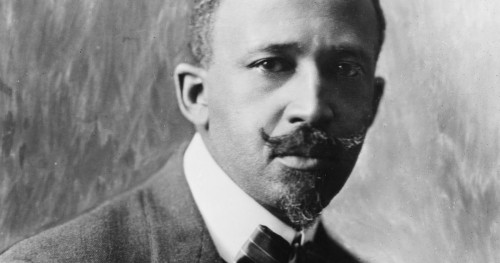This work by New American History is licensed under a Attribution-NonCommercial-ShareAlike 4.0 (CC BY-NC-SA 4.0) International License. Permissions beyond the scope of this license may be available at newamericanhistory.org.
3.7 The Color Line and Double Consciousness in American Society
Bunk is a shared home for the web's most interesting thinking about American history. Take a moment to read about How Bunk Works. You can find the entire article that each excerpt on Bunk is drawn from by looking for the “View on…” button below that excerpt.
This linked excerpt discusses Black Reconstruction in America, an influential and celebrated history of the years 1860 to 1880, published in 1935 by W.E.B. Du Bois, one of the most prominent African Americans of the twentieth century. Du Bois, who held a doctorate in History from Harvard and who had taught at several universities, designed the book, in significant part, as a forceful rebuttal of white historians, notably Professor William Dunning of Columbia, who had characterized Reconstruction as a tragic and misguided moment in American history. After reading the excerpt and thinking back to what you have learned about the Reconstruction era, write down, discuss, or simply think about answers to the following questions:
- Why did Du Bois — and Martin Luther King, Jr., as indicated in the excerpt — consider the Reconstruction era so important?
- What were the various motivations that Du Bois had for writing a scholarly history of this historical period?
- In one of the book’s most well known chapters, Du Bois characterized the Civil War as a “General Strike,” effectively a collective decision by enslaved Americans to stop laboring for their enslavers. What message was he trying to communicate to the American public through this compositional choice?
The Legacy of Black Reconstruction. Du Bois's "Black Reconstruction in America" showed that the black freedom struggle has always been one for radical democracy. Robert Greene II via Jacobin on August 27, 2018


